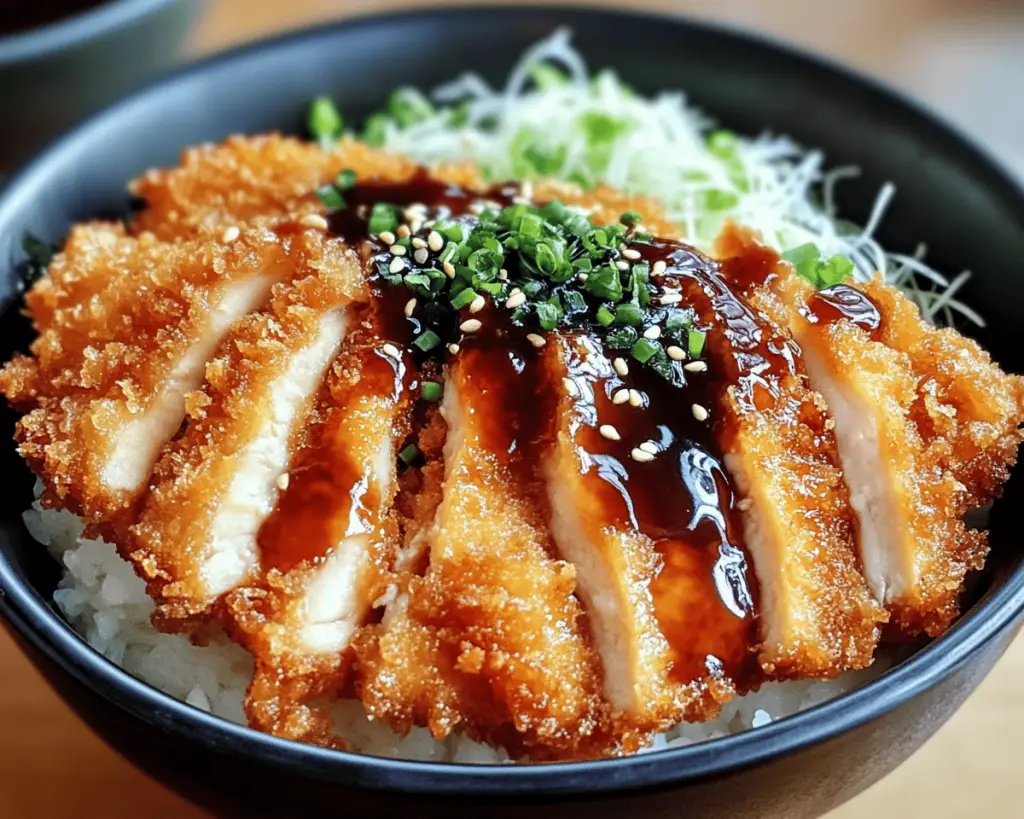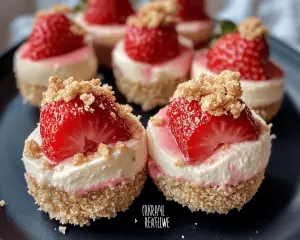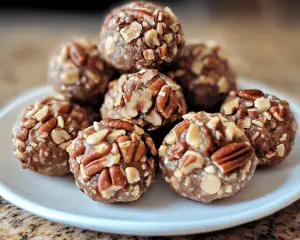I still remember the first time I ever made a Katsu bowl. It was a chilly autumn evening; the kind where you can feel the crispness in the air and the leaves are a riot of reds and oranges. My then-boyfriend, a culinary enthusiast who believed that every good relationship blossomed not only in conversation but also over shared meals, had asked if I could treat us to something special. We were living in a tiny downtown apartment, the space cluttered with remnants of our recent housewarming — half-assembled IKEA furniture and a few bare-flanked plants. Little did I know that this humble dish would anchor countless memories in our kitchen and hearts.
As we gathered the ingredients together, the kitchen filled with the comforting aroma of frying oil and sizzling breadcrumbs. The soundtrack of our evening was a mix of muffled city sounds and the gentle hum of our laughter. The process of making the Katsu was simple yet cathartic — we pounded the chicken until it was tender and thin, dipped it into flour, egg, and panko, and then let it bubble away in the hot oil. Each flip was a small celebration, a victory in our culinary endeavors. As we made the **tonkatsu sauce**, my boyfriend, arms draped around me from behind, whispered jokes about my amateur technique — flour dust on my cheek and a playful “katsu queen” title he crowned me with.
That evening, we made more than just food; we forged quiet moments of connection amidst the chaotic backdrop of city life. It was in that modest bowl, filled with beautifully crispy chicken, fluffy rice, and vibrant pickled veggies, where I discovered not just a dish, but a love language. As we sat on our couch, sharing bites and stories, it was clear that this was a recipe I would carry with me, through the ups and downs, into future kitchens with loved ones.
Inside the Ingredients of Japanese Katsu Bowls with Tonkatsu Sauce
Let’s embark on a delightful journey through the ingredients — a breakdown of what each piece brings to the table.
Chicken (or Pork): The soul of the Katsu. Traditionally, this dish features boneless chicken thighs or pork loin. I learned quickly that thighs provide more juiciness and flavor, while pork maintains that classic restaurant taste. Choosing high-quality meat makes all the difference — try to find organic or hormone-free options if you can. The first bite of the perfectly cooked meat, with its crispy exterior, is what elevates this dish to pure comfort food.
Panko Breadcrumbs: Ah, the secret hero. Unlike regular breadcrumbs, panko is coarser and creates a light, airy crunch that I adore. It reminds me of sunny days in Kyoto, indulging in katsu after visiting the Golden Pavilion. If you can’t find panko, a quick blitz of stale white bread in a food processor could serve well too, though I implore you to seek out the authentic stuff.
Flour: Dusting the chicken in flour helps the egg adhere better while forming a light crust. I usually use all-purpose flour, but a gluten-free variant can work if you need. The flour acts like a glue, holding the next layer, the egg, and the breadcrumbs firmly to the chicken.
Eggs: A deeply underrated ingredient that brings richness and moisture to the Katsu. It binds all the layers and locks in juiciness. One time, I accidentally used an expired egg (thanks to my persistent denial about my fridge’s state). The Katsu turned out fine, but I’ll never live down that smell! Fresh is always best.
Tonkatsu Sauce: This tangy, slightly sweet concoction is what sets the Katsu apart. Store-bought varieties are wonderful, but homemade sauce is like a warm embrace. It typically combines ketchup, Worcestershire sauce, soy sauce, and a touch of sugar. Make sure you don’t skip this part — it’s the crowning jewel that brightens every bite. The first time I served it at a dinner party, my friends said it reminded them of their childhood, and I felt so proud.
Rice: Steamed short-grain rice is a perfect backdrop — sticking together just enough to make forkfuls manageable. Some days, I jazz it up with furikake or sesame seeds, while other times, I keep it simple. It’s grounding, much like the memories of my childhood kitchen where simple rice was a staple at every meal.
Pickled Vegetables: A beautiful crunch, adding freshness to the dish. I usually make quick pickled cucumbers or daikon radish. The vibrant colors and varying textures create a dynamic bite, reminding me of the local market in Japan where vendors would offer little tasters with beaming smiles.
How Japanese Katsu Bowls with Tonkatsu Sauce Fits Into a Balanced Life
Katsu bowls are both comforting and satisfying, a beautiful blend of satisfaction and indulgence layered with flavor. While they may not be the hallmark of health food, the joy derived from savoring a dish made with love cannot be understated. In my experience, it isn’t just what you eat; it’s how you come together over food.
There’s an undeniable warmth in the act of cooking and sharing Katsu bowls. There’s the hearty protein from the meat, the quick carbs from the rice, and the colors of the pickled vegetables that remind us to eat the rainbow. I often find myself craving this dish when I need a pick-me-up. It served as my solace during long nights of studying in college and was a significant comfort when life felt overwhelming.
For those seeking to adapt the recipe for dietary restrictions, it’s beautifully flexible. You can easily swap chicken for tofu or eggplant for a vegan option. Instead of rice, quinoa or cauliflowers can bring heartiness without the carbs. The beauty of the Katsu bowl is its adaptability. I once made a gluten-free version for my friend and enjoyed wondering if panko made from rice would hold up. To my delight, it created a delightful crunch, proving that this beloved dish can always reinvent itself.
At its core, Katsu bowls symbolize finding balance—enjoyment wrapped in tradition but also room for creativity. It holds the reminder that we can indulge without guilt, and every bite can be a celebration rather than just a calorie.
What You’ll Need
– Boneless chicken thighs or pork loin: 1 lb, pounded thin
– Panko breadcrumbs: 1 cup
– Flour: ½ cup
– Eggs: 2, beaten
– Tonkatsu sauce: ½ cup (store-bought or homemade)
– Steamed short-grain rice: 2 cups
– Pickled cucumbers or daikon: ½ cup for garnish
– Salt and pepper: to taste
– Vegetable oil: for frying
This recipe serves about 4, perfect for a cozy evenings with loved ones or a splendid dinner gathering.
Preparing Japanese Katsu Bowls with Tonkatsu Sauce Step by Step
Here’s where the magic happens. The moment you decide to cook, it feels like inviting positivity into your home. Gather your ingredients, and let’s get cooking together.
First, let’s prep the chicken (or pork). Carefully pound it to a uniform thickness between two sheets of plastic wrap, a wooden mallet transforming protein into a canvas. Season with a touch of salt and pepper – a little goes a long way.
Set up a breading station with three shallow dishes: one for the flour, a second for the beaten eggs, and the last one for the panko. Dredge each piece of meat in flour — don’t worry if it gets a little messy, it’s part of the fun. Then, dip it to coat in the egg, letting any excess drip off. Finally, roll it in the panko, pressing lightly to adhere, and smiling at the soft crunch that awaits you.
Next, let’s heat a generous glug of vegetable oil in a skillet over medium-high heat. I always test the oil by throwing a bread crumb in — if it sizzles, we’re good to go! Gently place the breaded chicken into the hot oil, frying for about three to four minutes on each side until golden and crispy. Allow the Katsu to drain on paper towels for a moment before slicing into strips, the steam escaping with such a tantalizing aroma that I can hardly resist.
While we wait for the Katsu, prepare the rice as per your usual method—perhaps in a rice cooker, on a stovetop, or even a pressure cooker if you’re feeling adventurous. The fluffy rice will absorb all the wonderful flavors from the sauce.
To serve, layer the rice at the bottom of your bowl, place the Katsu on top, and spoon over that glorious Tonkatsu sauce. Finally, don’t forget to sprinkle on your pickled veggies. Take a moment to admire your masterpiece – it should look inviting, comforting, and most importantly, have your heart in it.
If the coppery smell wafts through the air, don’t panic if it looks a bit messy — mine always does! Remember, the effort is what counts.
Lessons from My Kitchen
Over the years, I’ve had my fair share of trials and trials in the kitchen while perfecting my Katsu bowl. The first time I served it, the chicken was a tad overcooked, leaving it dry and a little sad on the plate. I learned the hard way that timing is my ally; keeping an eye on frying temperatures can save a meal from mediocrity.
I experimented with different marinades too; I’ve tried soy, ginger, and garlic, and every so often will play around with the sauce combinations. One of my favorites these days includes adding a splash of citrus—lime or lemon—to the Tonkatsu sauce, bringing a fresh brightness that pairs beautifully against the enrichening backdrop of the fried chicken.
Through the years, I’ve had friends and family offer their own suggestions. My grandmother, who swore by her own Katsu sauce style, would always say, “Experiment and discover flavors that speak to you,” a mantra I carry with me as I navigate my culinary journey.
What I love more than the dish itself is how Katsu bowls invite sharing. It’s a warm embrace found in the rhythms of our gatherings, a staple during birthdays, rainy days, or fun, impromptu dinner parties. Each bowl is filled not just with food but the stories and laughter surrounding it.
(Closing Thought)
Katsu bowls have become a cozy companion in my kitchen, representing much more than a recipe for me. Through trials, learning moments, and laughter, they hold tales from my life, evolving with me in balance and delight. I invite you not only to create but to share. Let it journey with you through seasons and stories, becoming a faithful friend in your culinary adventure. Cook, laugh, and relish these moments, for in them lie the true flavors of life.



